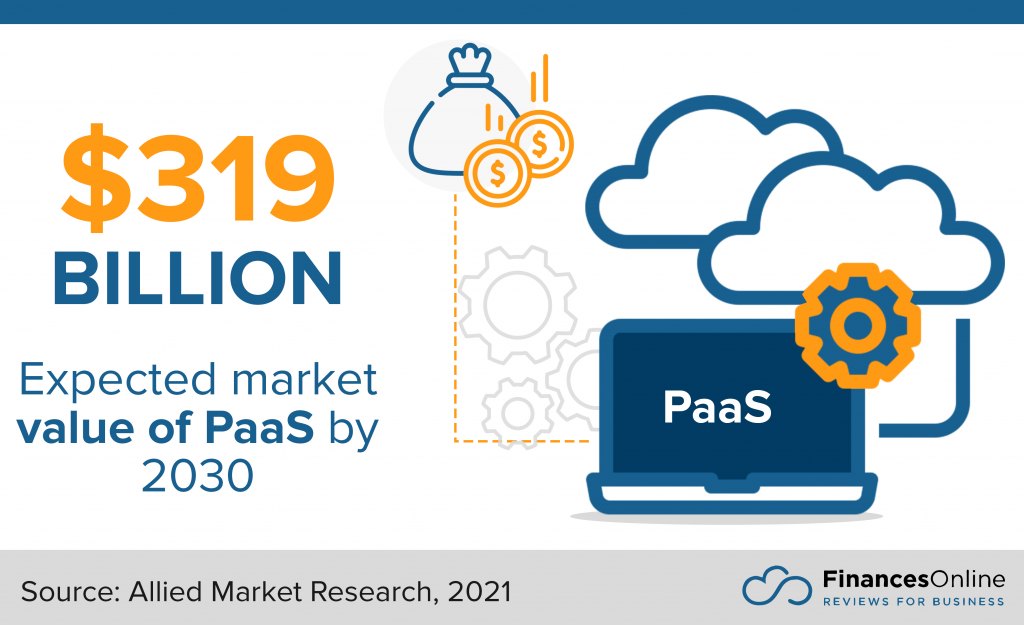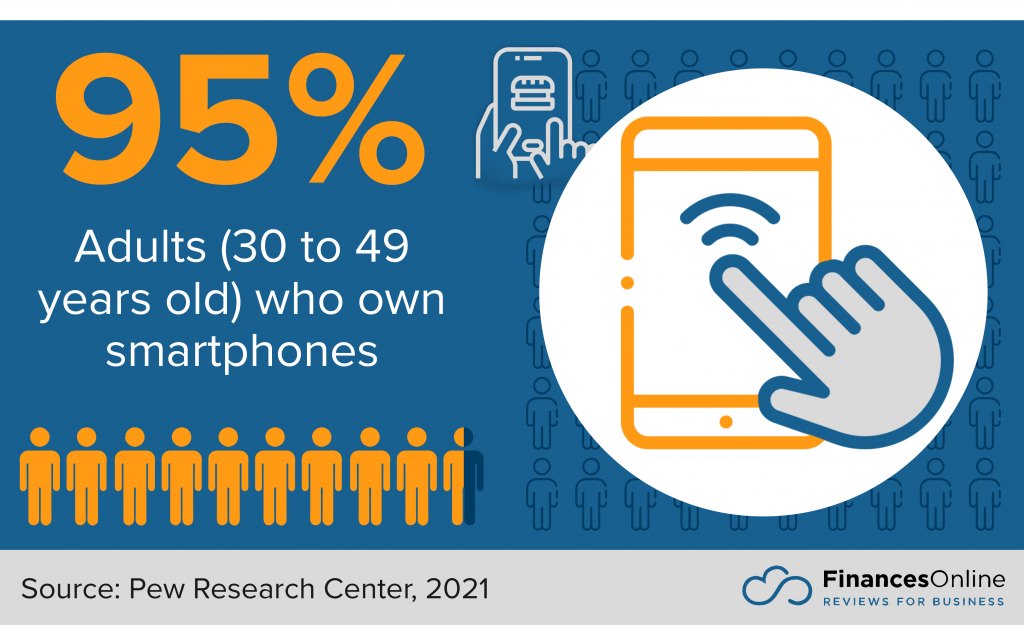A decade ago, companies had to invest in on-premise infrastructure to enjoy the benefits of software such as CRM, business analytics, and even automation. Over the last few years, however, the rise of cloud technology made it possible to bring entire business operations offsite through Software-as-a-Service (SaaS) products. Organizations are now able to take advantage of applications that can help them grow rapidly without the expensive overhead.
Just like any innovation, SaaS software, along with its siblings Platform-as-a-Service (PaaS) and Infrastructure-as-a-Service (IaaS), is undergoing constant changes. These applications have evolved from simple cloud features to entire platforms that provide advanced features and as ideal software for small businesses and enterprises alike. This article will explore upcoming SaaS trends for 2022 and how business operations are continuously improved by such technology.

SaaS Trends Table of Contents
- SaaS For Remote and Hybrid Work Is Here to Stay
- Migrating From Saas to PaaS
- Data-Driven SaaS Through Centralized Analytics
- Artificial Intelligence Will Become a Standard SaaS Feature
- Machine Learning Will Evolve Into MLaaS
- Wide Adoption of Vertical SaaS
- APIs Continue to Make Digital Transformation Easier
- Increasing Security Concerns
- Low-Code and No-Code Platforms Are Becoming Popular
- Mobile-First SaaS Will Open New Opportunities
- Companies Replacing or Upgrading Their MarTech Stack
The COVID-19 pandemic has amplified all of the benefits that SaaS has to offer. Businesses require turnkey digital solutions that enable all employees to communicate and collaborate in a consistent manner while minimizing upfront and ongoing costs. Additionally, businesses want the ability to switch providers at any time, which SaaS software subscriptions are able to deliver.
Source: Statista, 2021
The unprecedented growth of SaaS serves as a proof of its wide adoption, from startups to international corporations. In 2021, the SaaS market was worth about $145.5 billion. As the various industries continue to move from in-office setups to remote and hybrid working, the SaaS market will continue to grow at a rapid pace in the coming years. On top of that, a new generation of SaaS is expected to help industries cope with the complexities brought about by the pandemic.
1. SaaS for Remote and Hybrid Work Is Here to Stay
As the pandemic progressed throughout the last few months, so did the approach and perception of work. Employee expectations changed permanently, with many opting to resign in pursuit of a better work-life balance or greater flexibility in terms of where and when they work. With 70% of full-time workers in the United States having worked remotely (Owl Labs, 2021)—and many continuing to do so—employers began adjusting their workplaces to accommodate remote work and hybrid models.
For most companies, this means faster adoption of SaaS and other cloud services. For example, a 2021 Information Services Group (ISG) survey showed that 46% of companies are using HR SaaS platforms, a 20% increase from two years ago (Business Wire, 2021). The same study also predicts that about 57% of organizations will be using hybrid or cloud-based SaaS by 2023.
Some of the early winners in the SaaS software space are applications such as video conferencing, screen sharing, and other collaboration software. CRMs, sales platforms, and other key business applications have followed suit. And, within the next few months, companies will continue to bring their operations online through people management apps, productivity platforms, and remote delivery systems.
Source: Information Services Group, 2021
SaaS for Remote and Hybrid Work Key Takeaways
- A majority of employees are choosing remote or hybrid work for a more balanced life as well as flexibility.
- Organizations are adopting SaaS to permanently shift to remote or hybrid work.
- Some of the most popular SaaS for remote and hybrid work are collaboration software, CRMs, sales platforms, video conferencing apps, and more.
2. Migrating from Saas to PaaS
While companies share some common business operations, each organization is unique. And, as businesses move to the cloud, so do their needs change. They will require custom applications that will meet their exact needs. This is where PaaS comes into play.
SaaS provides companies with immediate and complete service. However, they usually come with sets of features that are designed to work out of the box. This means customization is limited if present at all. On the other hand, PaaS allows companies to build custom applications that live on the cloud. It focuses on full-cycle automation. It provides a platform for developers to design and deploy applications without having to worry about time-consuming routine or specialized tasks, such as load balancing, storage configuration, and auto-scaling. Complete flexibility and customizability differentiate PaaS from SaaS.
The migration from SaaS to PaaS is evident in the rapid increase of demand in the last few years. In 2020, the global PaaS market was valued at about $44 billion (Allied Market Research, 2021). Moreover, it is expected to grow to $319 billion by 2030. The market benefits from the pandemic due to a shift to cloud and online platforms. Additionally, the rapidly increasing demand for online shopping is prompting small- and medium-sized businesses to leverage PaaS to scale up their online presence.

Migrating From SaaS to PaaS Key Takeaways
- Organizations will migrate from SaaS to PaaS as they continue to bring their unique business operations to the cloud.
- Custom applications on the cloud will become a norm as PaaS becomes more accessible to companies.
- The PaaS market is expected to grow to $319 billion by 2030 due to the increasing demand for cloud computing services.
3. Data-Driven SaaS Through Centralized Analytics
As digital transformation accelerates across industries, businesses of all sizes turn to data to expedite their operations while better understanding their customers or users. So, investment in innovations powered by analytics-driven SaaS is expected to soar. SaaS providers are seeing this opportunity and are releasing robust business intelligence (BI) tools along with their platforms.
For example, Amazon Web Services, one of the leaders in cloud technology, has begun to offer cloud-native and serverless BI services. In 2020, the company released Amazon QuickSight, a powerful BI platform that allows businesses to understand data through querying in natural language. More companies are launching powerful BI tools such as Microsoft Power BI, Oracle Analytics Cloud, SAS Visual Analytics, and more.
According to a study by Verified Market Research, streaming analytics will see rapid growth within the next few years (Verified Market Research, 2021). The industry, which was worth $9.7 billion in 2020, is expected to reach around $99 billion by 2028. That is at a CAGR of more than 33% from 2021 to 2028.
Analyzing data from a single point of truth will help users discover hidden insights by using modern solutions like performance dashboards that are accessible to everyone. Customers can access their data from anywhere, at any time, with SaaS models’ centralized systems. This is accomplished through the use of advanced software capabilities and an online environment where each user has access to analytics in real-time.

Centralized Analytics in SaaS Key Takeaways
- Organizations of all sizes are leveraging big data and analytics to become more competitive.
- SaaS companies will continue to provide advanced BI tools with a wide range of features from centralized dashboards to forecasting.
- The streaming analytics market will increase within the next few years due to the demand for customer behavior, market trends, and more insights.
4. Artificial Intelligence Will Become a Standard SaaS Feature
In the SaaS industry, artificial intelligence is quickly becoming a standard feature. Companies in a variety of sectors can now leverage autonomous innovations to enhance product, service, and content customization while also better understanding their target audience’s needs through data-driven analysis. As a result of the perfect balance of increased return on investment for reduced input, businesses can use AI to become more efficient and intelligent while spending less money.
The need to do more with less is driving the demand and improvements in AI technology. In 2020, the software segment of the AI market will take the majority of its portion at $247.6 billion (Statista, 2021). The growth of the AI market will continue to accelerate in the next few years. Experts predict that it will be worth more than $997.8 billion by 2028 as more industries adjust to the rapid changes in operations (Grand View Research, 2021).
AI is likely to disrupt and change the SaaS industry in many ways, especially in improving key features of many software models. Automating and personalizing services, enhancing security, and augmenting human capacity are all made possible by combining SaaS and AI capabilities. These innovations will continue to advance as developers gather more information from users and customers.
Source: Statista, 2020
AI in SaaS Key Takeaways
- AI is steadily becoming a standard feature in many SaaS platforms.
- The software segment takes up the majority of the AI segment highlighting its integration with SaaS.
- AI will continue to improve SaaS features such as personalization, automation, and security.
5. Machine Learning Will Evolve Into MLaaS
Just like AI, machine learning (ML) will see unprecedented growth within the next few years, especially in the SaaS space. ML is already empowering SaaS solutions to become more self-improving, which leads to better operations efficiency and intelligence. As it becomes an essential part of AI-based SaaS, companies will begin to demand better control in training for the use of their software. As a result, developers are now offering Machine-Learning-as-a-Service (MLaaS).
Data pre-processing, facial recognition, data visualization, natural language processing (NLP), predictive and preventive analytics, and deep learning are all common features offered by MLaaS providers. The actual computation is handled by the providers’ data centers. Some of the most popular MLaaS in the market right now are IBM Watson Studio, Google’s AI and ML products, Amazon SageMaker, and Microsoft Azure ML.
The pandemic has further accelerated the growth of MLaaS in the last few months. In 2020, the emerging technology was worth about $1.8 billion (StrategyR, 2020). By 2026, the MLaaS market is forecast to grow to $12.6 billion, which is a CAGR of 38% over the next few years.
Evolution of ML to MLaaS Key Takeaways
- Machine learning will become an integral part of any AI-powered SaaS.
- ML will evolve into MLaaS as companies require better control over learning and training models.
- MLaaS will continue to grow to more than $12 billion by 2026, underscoring the need for better AI-powered software.
6. Wide Adoption of Vertical SaaS
One of the SaaS trends that are taking the industry by storm is the wide adoption of vertical SaaS. Most cloud platforms are horizontal SaaS, which targets a wide audience in regards to the industry. They typically satisfy common business needs such as marketing, accounting, and sales. In contrast, vertical SaaS solutions aim to provide industry-specific needs.
Vertical SaaS tools are typically developed by people with in-depth knowledge and expertise in the specific industry that it targets. As a result, companies within those industries enjoy features designed for processes that are unique to them. For example, a law practice management software comes with functionalities that allow firms to run their offices, such as case management, document assembly, and legal CRM.
These specialized features are attracting organizations in various industries, which drive the next vertical SaaS trends. Banking and other financial organizations are some of the biggest spenders, taking up 40% of the total vertical SaaS market in 2019 (Eleken, 2020). The media and communications industry followed at 19%, along with government bodies at 16%.
As companies continue to meet these demands, the vertical SaaS market share will continue to grow in the next year or so. For example, companies under the Fractal Vertical SaaS index have enjoyed rapid growth in value since 2020 (Fractal, 2021). The index’s total market cap increased from about $179 billion in early 2020 to a little over $441 billion towards the third quarter of 2021.
Source: Nasdaq, 2020
Vertical SaaS Key Takeaways
- Vertical SaaS will grow as companies with unique, industry-specific needs demand features that will address them.
- The banking and financial industries are the biggest spenders in vertical SaaS due to their specific operational needs.
- Vertical SaaS companies have been experiencing significant growth over the last few years due to the shift from on-premise solutions to cloud computing.
Most Popular Cloud Management Software
- IBM Cloud Orchestrator. A widely-used, easy-to-use cloud management system that’s customizable and secure. It also helps businesses provide faster delivery of their services.
- Apache CloudStack. A leading open-source cloud management tool that businesses turn to because of its broad integration and scalability.
- Wrike. A cloud management platform powered by an Adobe Creative Cloud extension for better management of in-house and dispersed work teams.
- Symantec Web & Cloud Security. A cloud management solution that uses top-tier security protocols to provide business users with robust protection in their cloud usage.
- AppFormix. A cloud management tool that offers robust end-to-end visibility for all apps that businesses use over the cloud.
7. APIs Continue to Make Digital Transformation Easier
The COVID-19 pandemic and shifting market conditions have increased the urgency of digital transformation. An organization’s ability to package its services and assets into software modules that can be reused is critical to digital transformation.
A wealth of useful information and capabilities is already available within the computer systems of every business in the world. Making use of its full potential necessitates repurposing it, as well as combining it with the valuable assets of collaborators and third parties. Application programming interfaces (APIs) allow the synergy and integration of digital assets from traditionally independent systems.
According to Google’s State of API Economy 2021 report, 56% of IT decision-makers are already leveraging APIs to build better products and experiences (Google, 2021). Another 52% say that APIs are accelerating innovation by making it easy to expose assets with their partners.
So, what’s next for APIs? REST API will continue to be around for a while. But, the new generation is entering the market in order to provide better security, global performance, and data synchronization. Web Push API, gRPC, and GraphQL are becoming more popular among developers, especially as the market demands better SaaS solutions (The New Stack, 2021).
Perception of APIs Among IT Decision Makers
Build better digital experiences and products: 56%
Build better digital experiences and products
56%Accelerate innovation by exposing assets with partners: 52%
Accelerate innovation by exposing assets with partners
52%Better system integration: 40%
Better system integration
40%Strategic assets for creating business value: 36%
Strategic assets for creating business value
36%Directly leveraged by external customers: 22%
Directly leveraged by external customers
22%Source: Google, 2021
Designed byDigital Transformation With API Key Takeaways
- Companies will adapt to the new normal through rapid digital transformation with the help of APIs.
- APIs will continue to be at the center of new SaaS innovations by integrating digital assets into new products.
- While REST still dominates the market, new technologies such as Web Push API, GraphQL, and gRPC will usher in a new generation of well-integrated SaaS solutions.
8. Increasing Security Concerns
SaaS security has long been a concern for security professionals. The slow-burning embers were fanned into a blazing brushfire by the exponential growth of SaaS application use throughout the pandemic and the following years. The need for rapid digital transformation is leading companies to push security as their secondary priority.
More than 85% of companies have identified SaaS misconfigurations as one of the top risks they face today (Adaptive Shield, 2021). Even with such risks, only 12% of companies check for SaaS misconfigurations every week. For security teams, configuring the settings of all internal SaaS apps is one of the biggest challenges. Each app has its own unique set of options, a distinct user interface, a large variety of jargon, and a different level of complexity. It’s impossible to set up settings for hundreds or thousands of different apps by hand.
Another report reveals how today’s enterprises have become increasingly vulnerable to both internal and external threats because of the vast quantities of unmanaged data in today’s organizations. Because of the unmanaged nature of 40% of all SaaS assets, more people inside and outside the organization have access to sensitive information (DoControl, 2020). While companies are aware of these risks, they are still behind when it comes to SaaS security hygiene.

SaaS Security Concerns Key Takeaways
- The rapid shift of companies to SaaS platforms is causing significant security concerns and vulnerabilities.
- SaaS misconfigurations are some of the leading security risks that companies struggle to mitigate.
- Unmanaged SaaS assets and data also put sensitive information at risk across different industries.
9. Low-Code and No-Code Platforms Are Becoming Popular
At the onset of the pandemic, companies experienced a significant challenge in shifting to digital solutions: the lack of engineers. This is prevalent not only among large enterprises but among SMEs as well, where the budget for SaaS solutions is limited. As a result, low-code and no-code platforms experienced rapid popularity.
A number of organizations embraced low-code platforms so they could quickly develop and deploy new applications. Most development firms will increasingly adopt low-code tools and more as a result of these experiences. Hybrid teams of business users and professional developers using low-code cloud-native platforms to build apps are expected to emerge in the near future.
The popularity of low-code/no-code solutions is evident in its growth from around $10.3 billion in 2019 to about $187 billion by 2030 (Global News Wire, 2020). A report by Formstack supports this trend, with about 66% of workers adopting low-code or no-code solutions within the last year and 41% within the last six months (Formstack, 2021).
Low-Code And No-Code Popularity Key Takeaways
- The pandemic is accelerating the rapid adoption of low-code and no-code solutions.
- Low-code and no-code platforms allow companies to develop and launch custom applications even with limited technical skills.
- The low-code and no-code development market will continue to rise as more companies shift to cloud technology and online-first operations.
10. Mobile-First SaaS Will Open New Opportunities
More often than not, mobile SaaS is just an afterthought for many developers. Vendors will naturally spend a lot of time and resources to create an efficient and effective desktop version of their products. However, experts say that not implementing a mobile-first approach in SaaS development causes these companies to miss valuable opportunities (Forbes, 2021).
In the US alone, 85% of the population owns a smartphone (Pew Research Center, 2021). Additionally, 95% of adults between the ages of 30 to 49 own similar devices. As such, it is safe to say that many business owners, employees, and consumers have access to mobile devices throughout their day.
The pandemic is also causing an acceleration in mobile app download across different industries. For example, there has been a 60% increase in downloads of mobile ordering apps in the US (TechCrunch, 2021). Other countries are seeing similar trends, such as the UK (70%), Indonesia (80%), and Russia (105%).

Mobile-First SaaS Key Takeaways
- A majority of Americans own a smartphone providing a great opportunity for companies to adopt mobile-first SaaS development.
- The pandemic and the change to remote or hybrid work are causing the surge in mobile app usage and downloads.
- Numerous industries are experiencing an increase in mobile users, such as food delivery services.
11. Companies Replacing or Upgrading Their MarTech Stack
When it comes to improving customers’ digital experience and modernizing their marketing organizations, marketers are increasing their budgets for marketing technology. Many companies will spend a portion of their budgets on upgrading or replacing their technology. The pandemic is further putting pressure on companies to update their marketing technology (MarTech).
Among the top marketing tools replaced in 2021 are marketing automation (24%), email distribution (23%), and CRM (23%) (Third Door Media, 2021). These three solutions reflect the need for digital engagement now that consumers primarily stay at home. Among the companies that replaced MarTech, 53% said that they chose marketing SaaS with better features.
Speaking of features, marketers are now prioritizing specific functionalities that can provide them with a competitive edge and improve their productivity. More than half (51%) of marketing professionals prioritize data insights and analysis, underscoring the importance of data-driven decisions in business (Ascend2, 2020). Systems integration (46%), real-time processing (40%), and data centralization (24%) are also among the most in-demand, which further highlights the demand to produce more with less.
Most Replaced Marketing Tools in 2021
Marketing automation: 24%
Marketing automation
24%Email distribution: 23%
Email distribution
23%CRM: 23%
CRM
23%Attribution (BI): 19%
Attribution (BI)
19%Analytics (BI): 17%
Analytics (BI)
17%CMS: 17%
CMS
17%SEO tools: 16%
SEO tools
16%Virtual events/Webinar platform: 16%
Virtual events/Webinar platform
16%Source: Third Door Media, Inc., 2021
Designed byMobile-First SaaS Key Takeaways
- The pandemic is ushering in a new generation of MarTech as companies increase their budgets for SaaS solutions.
- Some of the most popular MarTech features are marketing automation, email distribution, and CRM.
- Marketers prioritize data insights and analysis, which shows the industry-wide adoption of data-driven processes.
SaaS is The Future And It’s Here
SaaS is here to stay, and businesses need to accept it to keep their edge over the competition. These tools will continue to be in high demand as long as companies enter new industries (or create new markets). Additionally, enterprises and workers are beginning to rethink work. The higher demand in remote and hybrid work models means collaboration software, video conferencing tools, and productivity suites will continue to be in vogue.
Complexity is unnecessary, especially if it makes doing business more complicated than it would be otherwise. Because of this, the next generation of SaaS will make it easier for small- and middle-market businesses to build and manage their stacks. Similarly, large enterprises are looking to streamline their operations. As a result, SaaS platforms will be fully-integrated, centralizing these companies’ operations and assets.
References:
- Adaptive Shield (2021). SaaS Security Survey Report 2021. Adaptive Shield.
- Ascend2 (2020). MarTech Stack Optimization: Strategies, Tactics & Trends. Ascend2.
- DoControl (2020). Quantifying the Immense Risk of Unmanaged SaaS Data Access. DoControl.
- Fractal (2021). State of Vertical SaaS 2021. Fractal.
- Formstack (2021). The Rise of the No-Code Economy. Formstack.
- Gasparyan, D. (2021). Three Reasons Every SaaS Company Should Have A Quality Mobile App. Forbes.
- Grand View Research (2021). Artificial Intelligence Market Growth & Trends. Grand View Research.
- Google (2021). State of API Economy 2021 Report. Google.
- Information Services Group (2021). Companies Accelerating Adoption of Cloud-Based HR Platforms Amid Pandemic, ISG Survey Finds. Business Wire.
- Liu, S. (2021). Artificial intelligence (AI) market revenue worldwide in 2020, by segment. Statista.
- Nair, A. (2021). Platform-as-a-Service Market. Allied Market Research.
- Neupane, M. (2021). API Technology Trends in 2021. The New Stack.
- Owl Labs (2021). State of Remote Work 2021. Owl Labs.
- Pachenko, M. (2020). SaaS Market Overview and What the Pandemic Has Done to It. Eleken.
- Perez, S. (2021). App stores saw record 218 billion downloads in 2020, consumer spend of $143 billion. TechCrunch.
- Pew Research Center (2021). Mobile Fact Sheet. Pew Research Center.
- Research and Markets (2020). Global $187 Billion Low-Code Development Platform Market to 2030. Global News Wire.
- StrategyR (2020). Machine Learning as a Service (MLaaS): Global Market Trajectory & Analytics. StrategyR.
- Third Door Media (2021). MarTech Replacement Survey 2021. Third Door Media.
- Verified Market Research (2021). Global Streaming Analytics Market. Verified Market Research.























Leave a comment!